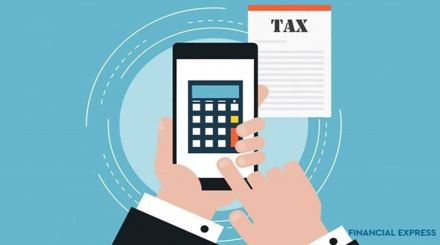By Divya Baweja
With the government embarking on its third term, anticipation is mounting as the country gears up for the much-awaited Union Budget of 2024.
While the Interim Budget provided some respite to taxpayers by waiving outstanding demands of up to INR 25,000 for Assessment Year 2010-11 and earlier, and up to INR 10,000 for Assessment Year 2011-12 to 2015-16, it did not introduce any changes to personal tax rates. Consequently, expectations are running high among various segments of society, particularly the salaried class, who are looking at the upcoming Budget to ease their financial burden through a reduction in taxes.
In Budget 2023, the government introduced some changes in the new tax regime to make it more attractive amongst taxpayers such as increasing the maximum amount of income not chargeable to tax from INR 2.5 lakh to INR 3 lakh, allowing standard deduction of INR 50,000, widening of slab with lower tax rates, reduction of surcharge for income over INR 5 crore and an increase in the income threshold for rebate, from INR 5 lakh to INR 7 lakh.
Also Read: Union Budget 2024: Why Standard Deduction limit needs to be increased to Rs 100,000!
The above changes have indeed encouraged taxpayers to switch to the new tax regime, but the shift is still not as expected by the government. Therefore, making the new regime more appealing to taxpayers could be a focus area for the government in this Budget. Taxpayers are looking for relief in the form of higher standard deduction, reduced tax rates, and wider tax slabs, expecting to benefit the middle-income group through this Budget. It is expected that authorities may consider reducing the highest tax rate of 30% to 25% under the new tax regime and increase the standard deduction from the current threshold of INR 50,000.
Further, the government may want to phase out the old regime and may also plan to increase the threshold limit for the highest tax rate from INR 10 lakh to INR 20 lakh, under the old tax regime, and increase the limit of 80C as an interim measure.
House Rent Allowance (HRA) is a significant component of an individual’s salary, allowing those living in rented accommodation to claim an exemption. The current exemption is capped at 50% of the basic salary for metro cities such as Delhi, Mumbai, Chennai, and Kolkata, and 40% for other cities. The current definition of metro cities under the law does not encompass the National Capital Region (NCR) and other large cities. Since many individuals live in areas such as Noida and Gurugram on the outskirts of Delhi, including NCR in the definition of metro cities could greatly benefit them. With this change, these individuals would be eligible to claim an HRA exemption of up to 50% of their basic salary, compared to the current 40% limit. Additionally, considering Bengaluru’s rapid growth, granting it metro city status could render the working class eligible for a 50% deduction for House Rent Allowance, potentially easing their tax impact.
Besides the tax rates and benefits, the government may also plan to rationalise some of the income tax processes and procedures. Currently, tax payments in India can be made through various modes such as net banking, debit cards, NEFT/RTGS, and over-the-bank counter. However, these are possible with an Indian bank only, which makes it difficult for a non-resident taxpayer to make tax payments. Non-resident taxpayers who need to deposit tax would benefit if they are allowed to pay taxes from their overseas bank accounts.
With the introduction of e-filing of tax returns, efficiencies in time and effort have been brought in the last mile connectivity of e-filing is the e-verification process; however, it has restricted means such as having accounts with net banking/demat facilities with specified banks, Aadhaar OTP to India mobile numbers, digital signature certificates, etc. Non-resident individuals living outside India who need to complete the tax return filing process, could benefit if the e-verification process can be extended via OTP to foreign mobile numbers or having two-factor authentication (different OTPs for foreign mobile numbers and email addresses). This would reduce paperwork and administrative tasks, such as tracking the receipt by the tax office and applying for condonation of delays. Alternatively, the time limit of 30 days should be extended to at least 60 days to facilitate verification through physical mode.
The above expectations, if met, would be a welcome relief for taxpayers, especially at middle income level. At the same time, these changes would be in line with the thinking of the government to simplify the law and the processes for the benefit of taxpayers. We will have to wait and see how the Finance Minister meets the expectations of taxpayers.
(The author is Partner, Deloitte India)
Disclaimer: Views expressed are personal and do not reflect the official position or policy of FinancialExpress.com. Reproducing this content without permission is prohibited.
